Looking for a fun, natural project for your kids this summer? A space to play in and call their own? Maybe give them a good, safe place to be while you enjoy your yard and garden, or tend to some tasks and chores?
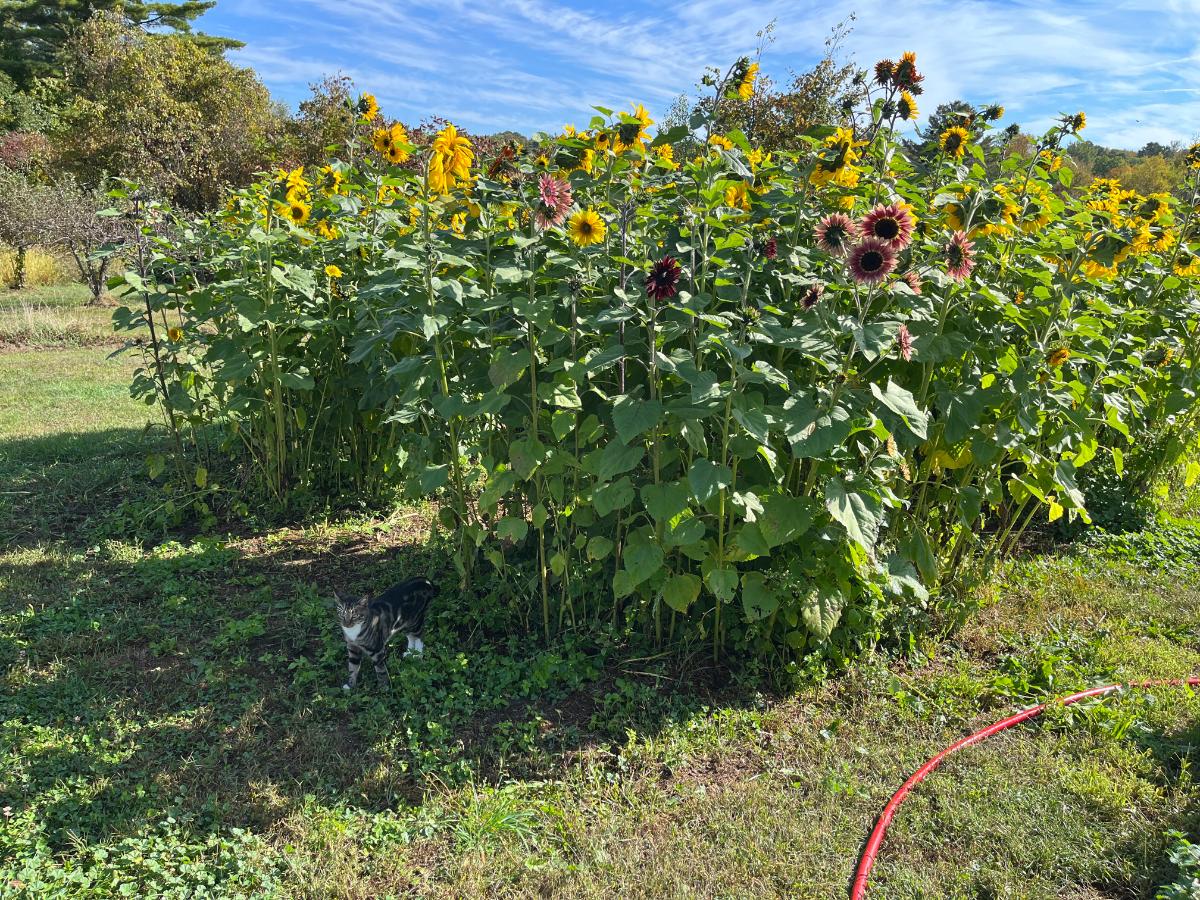
Grow them a Sunflower House!
A sunflower house is a simple project to “build”, and one that the kids can easily get in on, too. You don’t need much space -- about 10 square feet. A sunflower house gives kids a wonderful, fun, natural place to run, rest, and play.
Jump to:
- Your House Doesn’t Have to Be a House!
- How to Grow a Sunflower House for Months of Play and Enjoyment
- Choose the Right Sunflower Seeds
- Choose the Right Place for Your Sunflower House
- When to Plant Your Sunflower House
- Stake or Mark Your Sunflower House Outline
- Laying Out and Planting the Sunflower Fort!
- How big should your sunflower house be?
- Leave a Door for an Entrance
- Dig or Till for the Planting
- Space Seeds for Growth and Privacy
- Water Regularly While Sprouting
- Sunflower House Flooring Options
- Open Top or Build a Living Roof!
- (Optional) Mulching to Keep Weeds at Bay
- Plant Flower Beds for the Sunflower House
- How Long Does it Take to Grow a Sunflower House?
- Other Fun Final Touches (Optional)
- What to Do With Your Sunflower House After the Summer Season
Your House Doesn’t Have to Be a House!
Before we get into the project, let’s say this. Your sunflower house doesn’t have to be a “house” at all.
Your sunflower project can be anything you (or the kids in your life) want it to be.
Make it fun. Make it your own. Your sunflower playhouse could be a maze, a fort, an enchanted garden space, sunflower forest...whatever form you and yours want it to take.
How to Grow a Sunflower House for Months of Play and Enjoyment
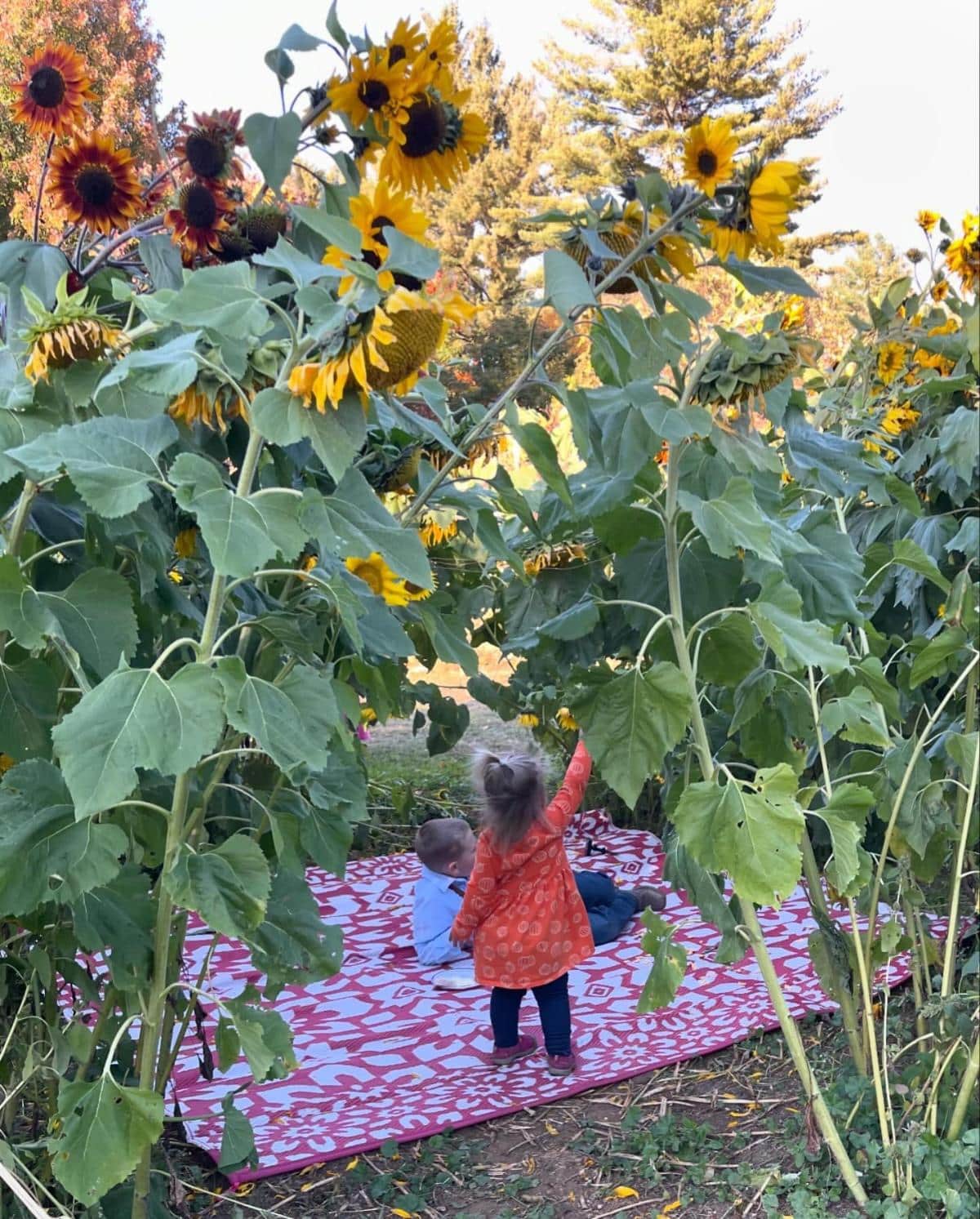
With a little space and a little elbow grease, you can grow a fun sunflower playhouse; a place your kids can truly call their own (and one that you might not mind relaxing in from time to time, too!).
It won’t cost much, either -- just the cost of some seed packets and a bit of your time.
The first step? Choosing your seeds!
Choose the Right Sunflower Seeds
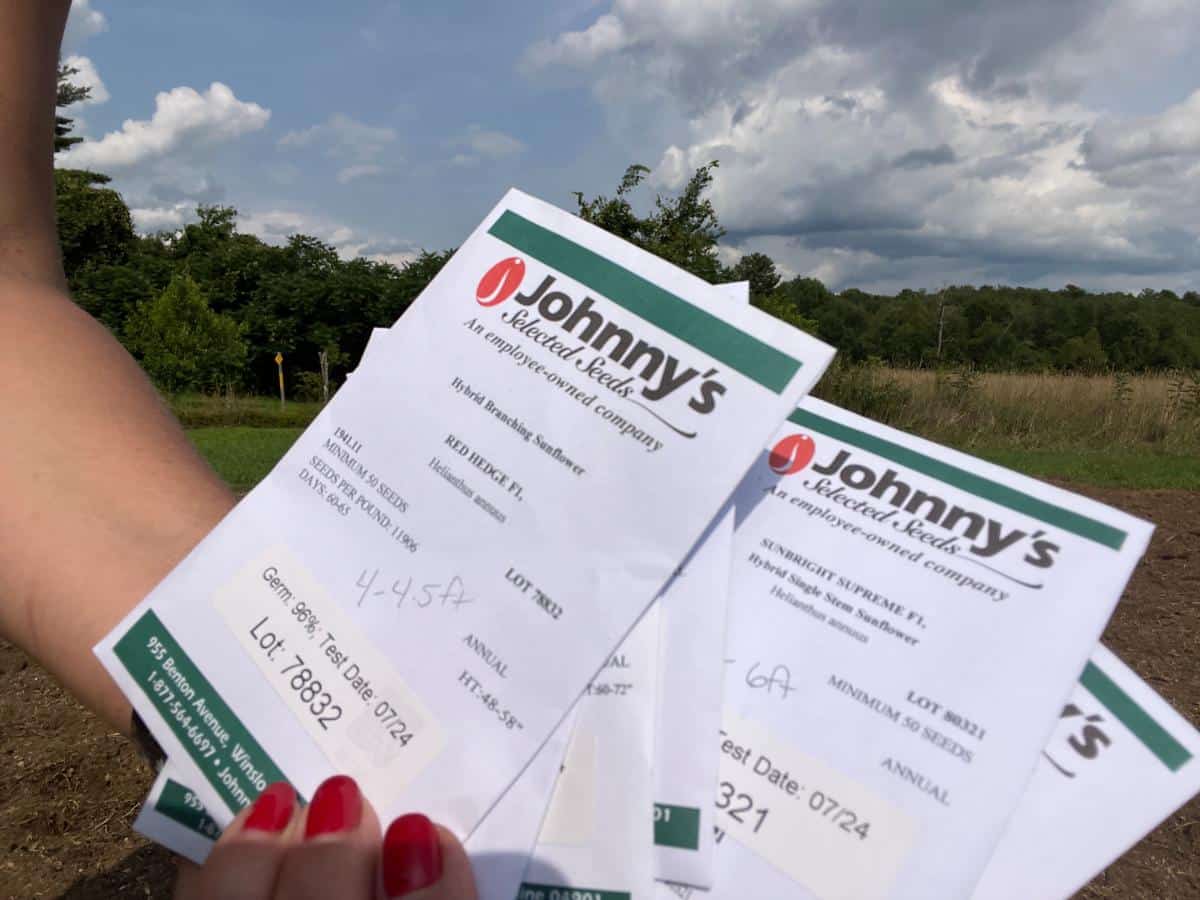
The first thing to do is to buy your sunflower seeds. To get the right type of sunflowers, you may need to order them online (depending on what is available to you locally). So it’s smart to start looking for seeds as soon as you decide to grow a sunflower house. That way, if it takes some time to ship them to you, you can have them arrive while you prepare your growing area.
There are some things you want to look for when choosing your sunflower variety (or varieties).
There are many different varieties of sunflowers that can work well; there is no one single “right” sunflower you have to grow. You just want a variety or type that has the characteristics that work well for a sunflower house or fort.
You want a tall sunflower variety so that you can grow a house that is tall enough for kids to stand in. You also want sunflowers with thick, strong stems, which the taller varieties will have.

- Buy sunflower seeds that grow to at least 7 feet tall or taller
- If you can find tall sunflower varieties with shorter days to maturity, your sunflower structure will be ready for play earlier
- You may also want some shorter varieties to plant along the outside walls as a sort of flower garden for the flower house (this will also give something lower that the kids can cut from for bouquets or displays, if they like)
- Feel free to mix and match types and colors
- For the main walls, however, focus on that tall variety
Choose the Right Place for Your Sunflower House
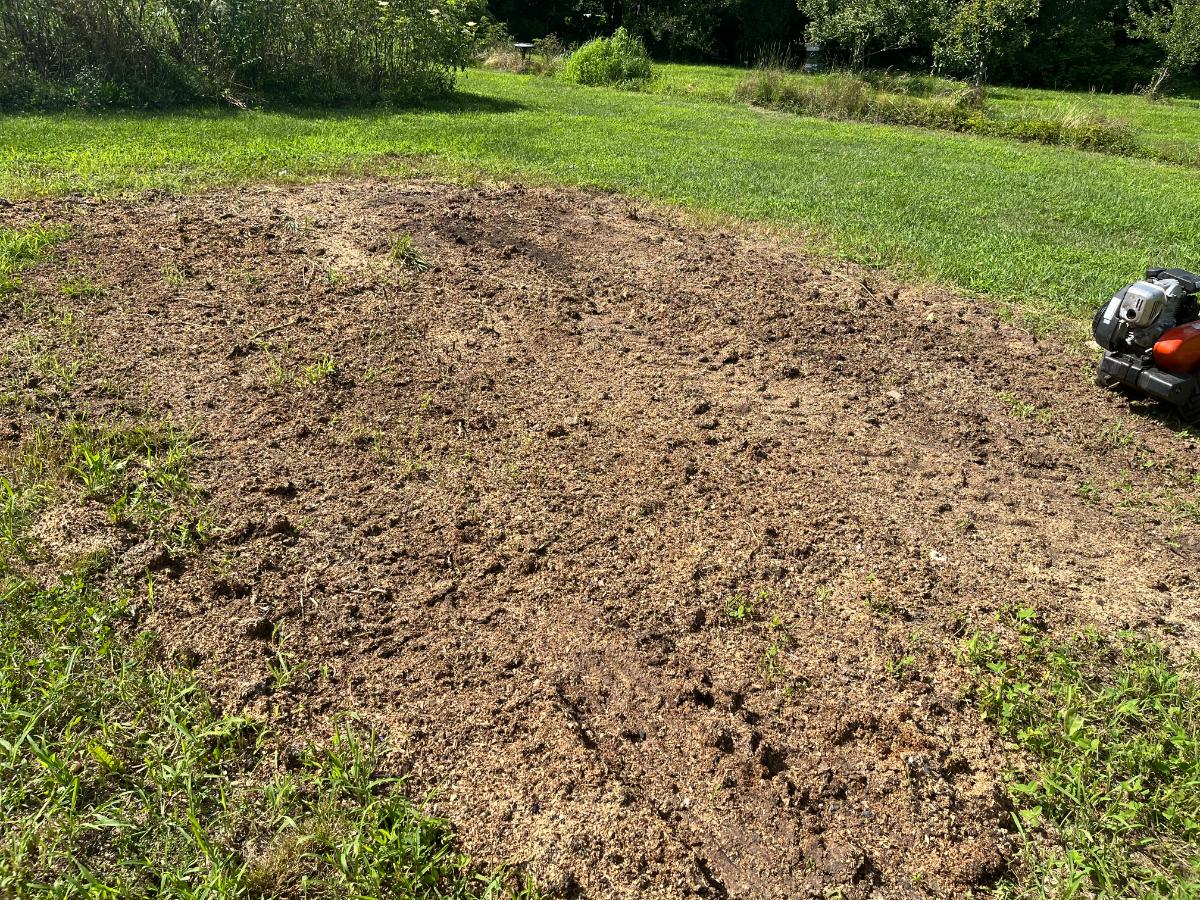
The next step is to choose the location for your sunflower house. You don’t need a lot of space -- a square about 10 feet by 10 feet will do. You can even plant through lawn grass in a corner of your yard.
There are only a few requirements sunflowers need in terms of placement and location. Here’s what to look for when choosing a place for your sunflower house:
- Choose a flat or mostly flat location (a little bit of slope won’t hurt, but the house will be more of a house with a flat “floor” surface)
- Sunflowers need full sun, so the location should be one that gets at least 6 to 8 hours of sunlight per day. The more sun, the faster your sunflowers will grow.
- Choose a safe location that will be a convenient place for you to have your kids play and spend time in
- Choose a location that is convenient for watering, in case you need to provide supplemental water
- The soil should be moist and well-draining (not a place that puddles too much or has standing water after a rainstorm)
When to Plant Your Sunflower House
What comes next is deciding when to plant. Ideally, you’ll want to get your sunflower house planted on the earlier side of the season, so that you can get the maximum use of it. Sunflowers are warm-weather plants, though, so you can’t plant them too early, or they may fall victim to late frosts.
When to plant your sunflower house:
- After the danger of frost has passed
- When the temperature of the soil is 60 to 65 degrees (16.5 to 18.3 C), sunflowers germinate best in soil temperatures in the 60 to 70 degree range (16.5 to 21.2 C)
- This is about the same timing you would use for planting frost-sensitive annual flowers or annual vegetable plants like tomatoes and peppers
Stake or Mark Your Sunflower House Outline
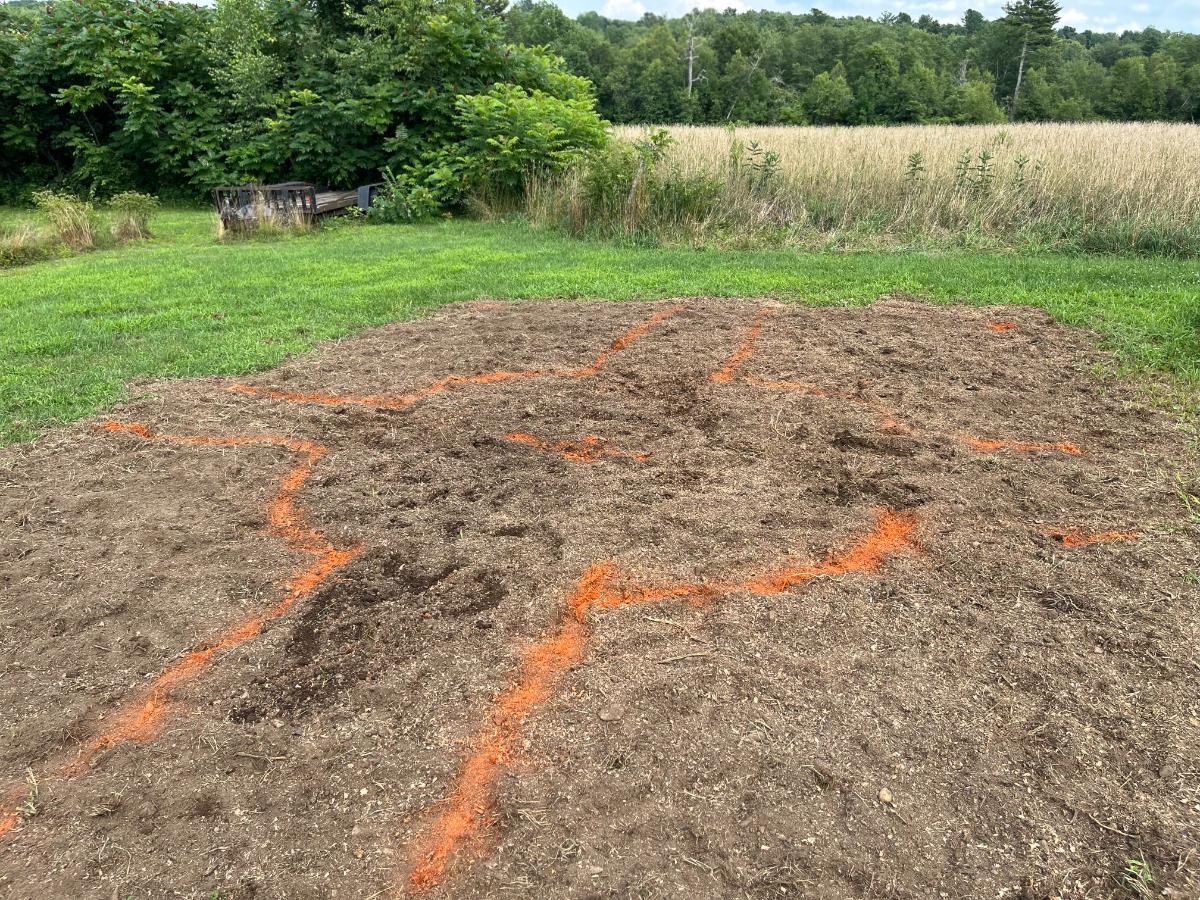
With the timing and logistics out of the way, now the fun begins! It’s time to lay out and plant your sunflower house! (Or fort or maze….)
Don’t forget to include the kids, and don’t forget to have fun!
The first step is to plan and mark where your sunflower house is going, and to mark the rows (the walls) so you know where to place the seeds to make those walls.
There are a few ways you can mark out the rows and the space where the seeds need to go. Here are some good options:
- Stakes and twine -- you can pound some small garden stakes into the ground and tie twine from stake to stake to mark where the rows should go. This is a more noticeable and more semi-permanent marking that can stay up while things get growing, so it may help prevent accidental mowing or running over of the plants and seedlings! This is especially helpful if someone else will be doing the mowing and yard maintenance, and it gives the kids an easy visual to avoid until the sunflowers are large enough to see.
- Inverted paint -- you can buy spray paint that sprays upside down, like what is used to mark roads, construction site locations, or ball fields. You can find this at any home or hardware store. The paint will eventually wash away or grow out, so don’t worry about causing permanent damage. Of course, you probably don’t want kids using the paint, or if you do allow it, only under adult supervision.
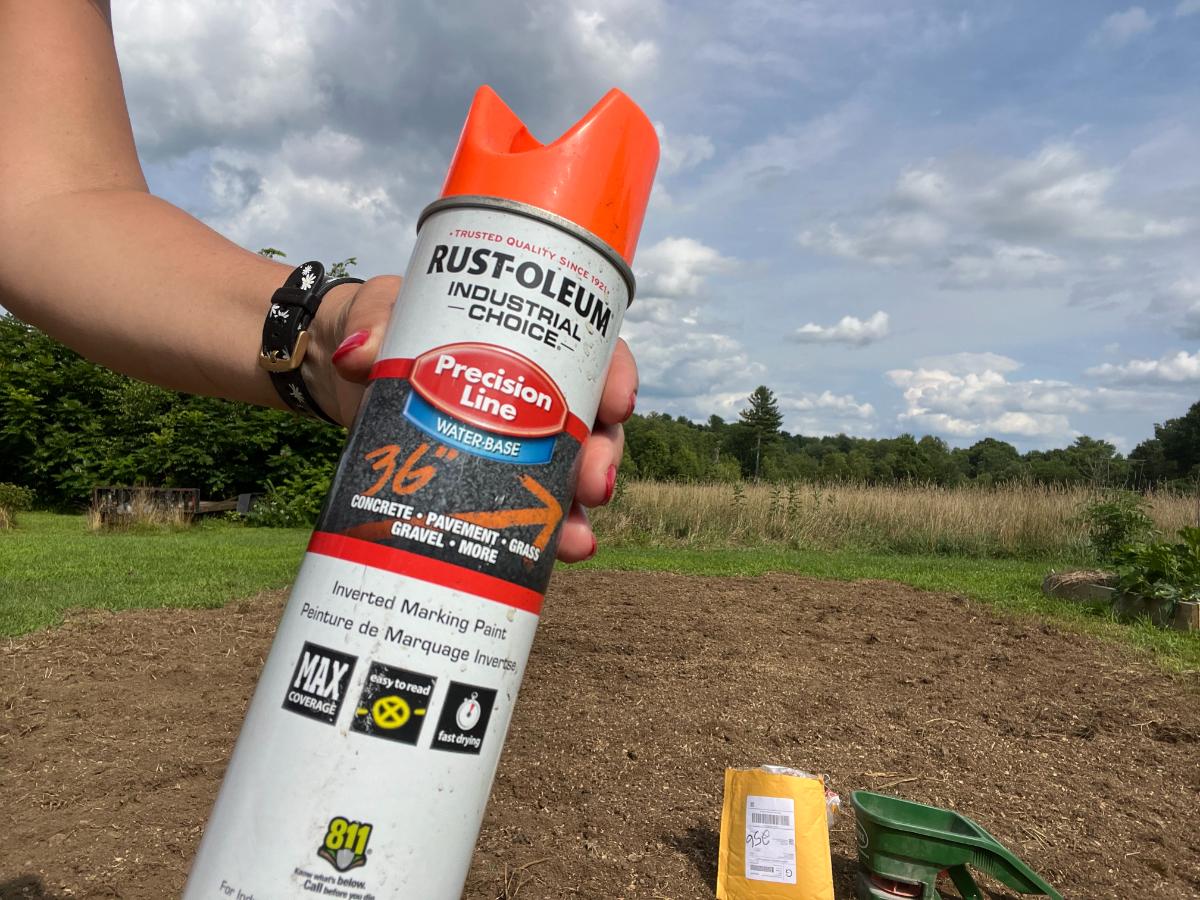
- Flour or baking soda -- you can sprinkle flour or baking soda on the ground to mark the space; it will be harmless and will disappear with planting, but is bright enough to be seen and followed (of course, this is not something you want to do days ahead, whereas the other two options can be done ahead of time and you can come back to it).
Laying Out and Planting the Sunflower Fort!
How big should your sunflower house be?
Space your sunflower walls about eight to ten feet apart. You want the center “room” or floor to be about eight feet across. It’s fine to go wider, but if you want to grow a roof (see below), you’ll need to have a smaller floor opening.
This will give enough room for playing, lounging, and relaxing, but will also be a small enough space that the flowers can cover and provide privacy. If you decide to do a living “roof” or “ceiling”, this will not be too far apart that it can’t be done.
Leave a Door for an Entrance

When you are planting, don’t forget to leave space for a door for entering and exiting. You can leave more than one “door” opening if you like.
All you need to do to create an entrance space is to leave an area where you do not plant flowers (in other words, don’t completely connect or close the row).
The space for the door or opening should be at least two feet wide. If you want to be able to maneuver a push lawn mower into the sunflower house for mowing the grass “carpet”, make sure it is at least wide enough for your mower to get through. Two feet will be wide enough for many home push mowers, but you may find that three makes things easier.
A three-foot opening will also be easier for adults to move through, in case you want to sit with the kids or you need to chase or go in search of one!
Dig or Till for the Planting
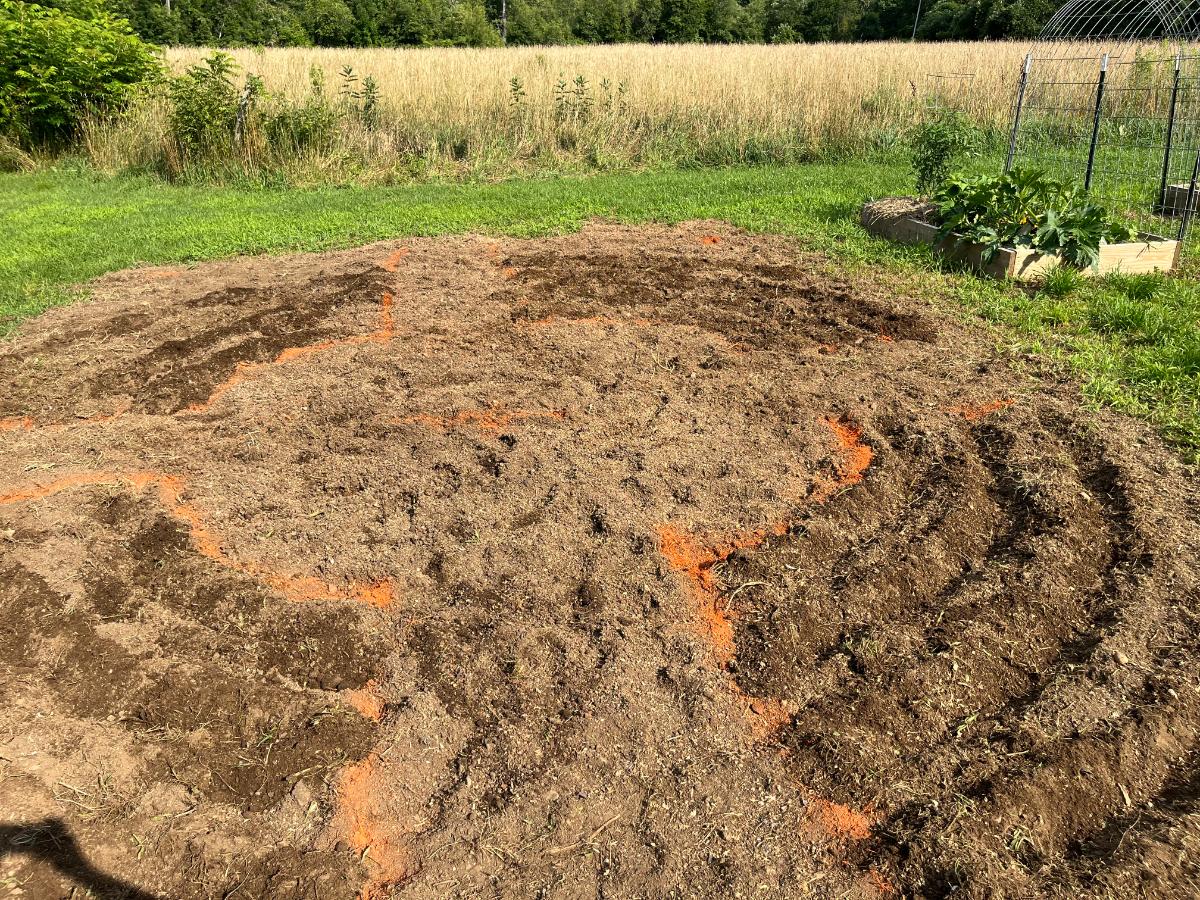
Shortly before you plant, you’ll need to prepare your ground. You can either till up the entire space, or you can simply cut in and turn over where the rows will go (the walls). You can use a rototiller or other garden tiller for this. You can also use the tiller just to cut and turn rows into existing grass, lawn, etc.
No rototiller? No problem! Just use a garden fork to dig up the grass, ground, or soil where the seeds need to go.
If you want to completely reseed the area, you can till up the whole space. This is a good choice if you need to kill a lot of weeds, or if you want to seed the area with something nice to use for a living carpet. White clover is a nice choice that can take the trampling of children, and it can still be mowed as needed (or not, because it is low-growing enough for playing).
Your prepared rows should be at least six to twelve inches wide.
Space Seeds for Growth and Privacy
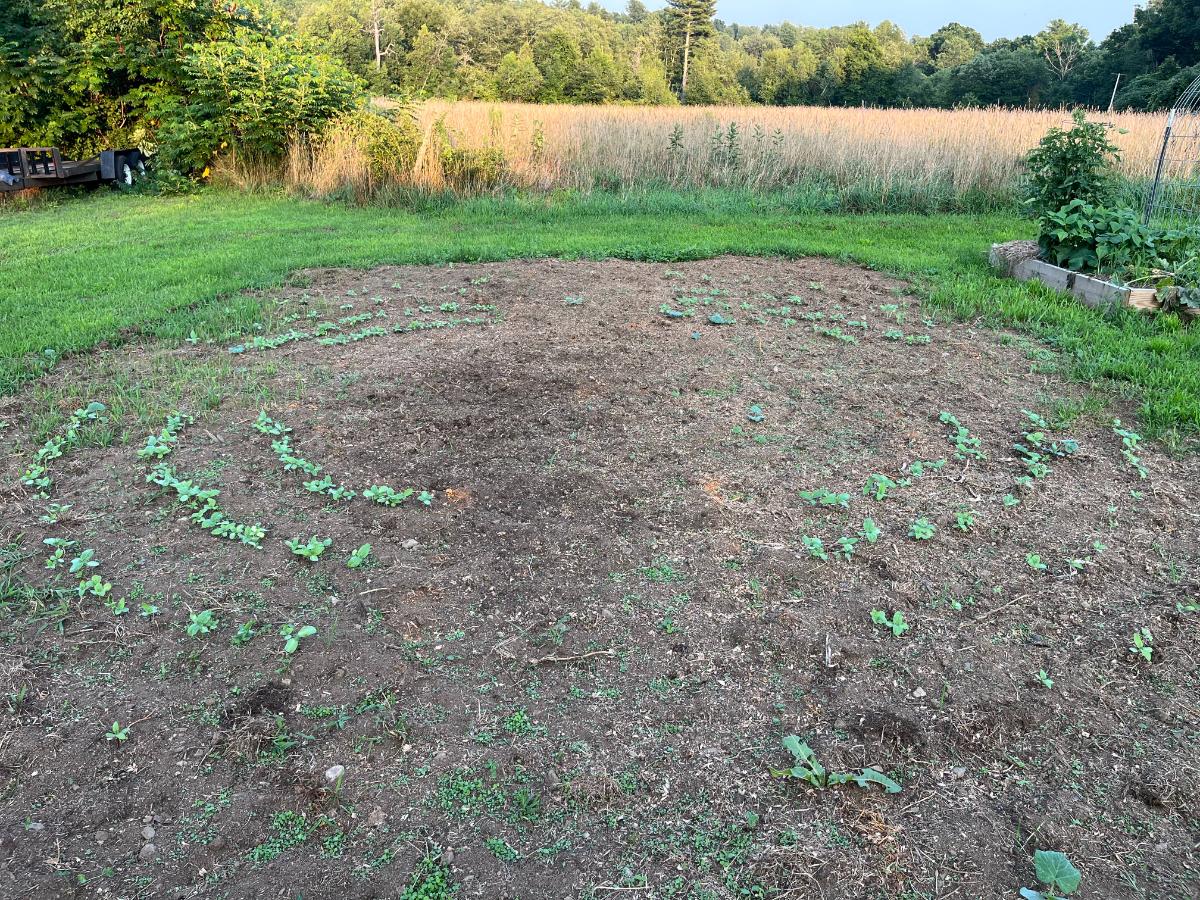
With your rows prepared, you can now plant your sunflower house walls! Just evenly space and plant the seeds in the rows you’ve prepared, according to your design.
For your sunflower house (or fort, etc.), the seeds should be planted
- 1 to 2 inches deep
- 6 inches apart
- Cover with soil and tamp down after planting
Another option is to sow the seeds closer in the rows, and then later thin the seeds to the desired spacing. This will let you see which seeds come up, prevent blank spaces if some of the seeds don’t germinate, and also helps to hedge against wildlife (in case birds or critters steal and eat some of your seeds!)
Plant Two (Or More) Rows for Thicker Walls
For a thicker wall that affords more privacy and more of a playhouse feel, you can plant two rows of sunflowers. This also makes the house a little more sturdy, and if some stalks get knocked down in play, or by wind and weather, you’ll still have plenty of “wall,” and it won’t have ruined the whole project.
To plant a double-walled sunflower house:
- Space rows of seeds 12 inches apart
- Try to offset the seeds in one row from the seeds in the next so there is a more solid wall without gaps
- Plant the seeds in the rows as above (1 inch deep, 6 inches apart)
Water Regularly While Sprouting
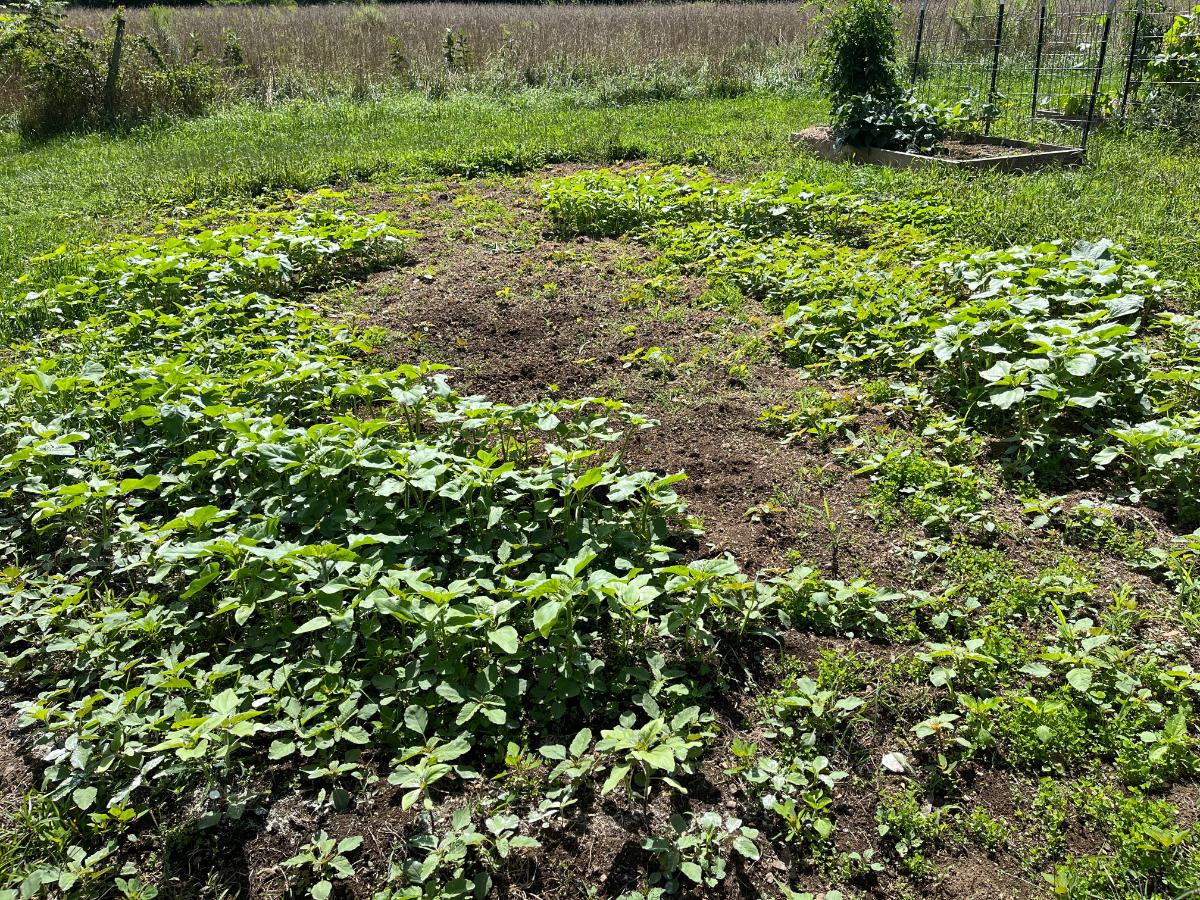
Sunflowers need a fair amount of moisture, but they are fairly low-maintenance once they are established.
However, when the seeds are just sprouting and while the seedlings are small with shallow roots, give them a little extra love and TLC. Let the kids help -- they’ll enjoy it!
- Water the planting daily or every two to three days, depending on soil conditions and rain
- Don’t flood the planting; it shouldn’t be muddy, but the seeds should be watered if the soil is dry when you stick your finger in one half to one inch down (about the depth of the planted seeds)
Your sunflowers should sprout in about one week. The roots will still be shallow, but you can begin reducing supplemental watering over the course of the next week or two after they’ve started to grow.
And as needed after the plants up
After the plants are up, if you get regular rain once or twice a week, you may not need to water (often, you won’t). But if you’re in a dry area or a dry spell, water the sunflower house as needed.
Sunflowers need about one to two inches of water per week. That’s one to two total, including any rain you have gotten. Just water to make up whatever amount you're not getting from Mother Nature.
Here’s a simple trick to help you decide if you’re getting enough water: 2 Simple Hacks to Know if Your Garden is Getting Enough Water
Sunflower House Flooring Options

Having something for a floor is fun, and can make the sunflower house cleaner and more comfortable.
You can go a natural planted route, or you can find something fun and more “homey”. If you planted into an existing lawn, the grass carpet will be all the floor you need.
Some other options include:
- Planting something low-growing and soft, like clover
- Outdoor rugs
- Outdoor turf
- Old rugs or carpets you don’t mind getting weathered
- Blankets or old quilts
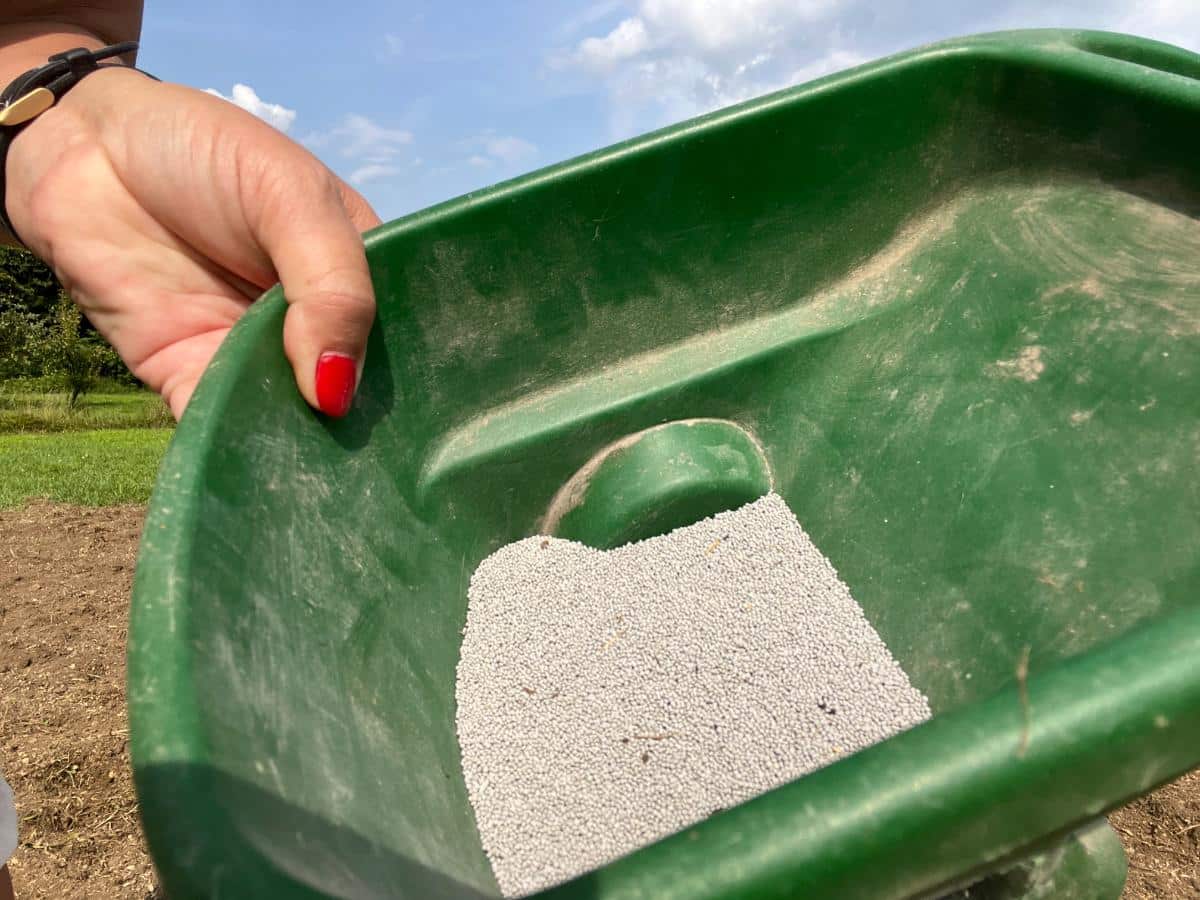
Open Top or Build a Living Roof!
You can either leave the ceiling or roof as an open-air top, or create a roof either with flowers or by planting climbing morning glories on strings. They create a pretty, blue roof.
To plant a morning glory roof:
- Plant morning glory seeds with the sunflowers after the sunflowers have grown to about 6 inches tall
- This gives the sunflowers a head start on the morning glories, and gives the morning glories something to climb on once they are up.
- This also ensures that the morning glory vines climb in the right direction, up the plants and toward the roof or ceiling
- To speed morning glory germination, soak them overnight before planting
- When the sunflowers start to form heads (tightly closed flower buds), tie garden twine behind the head, then string it across the house to an opposite head.
- As the morning glories grow, they will travel over the twine to close the top in
To create an arched roof with the sunflowers:
- When the sunflowers are five to six feet tall, gently tie them across to each other
- Be careful not to pull the roots out of the ground
- The flowers should bend and draw together to create a roof/ceiling
- You can shorten the twine to draw the stalks closer together as they grow, if necessary
- This works better with narrower spaces; you may want the interior space to be more towards 6 feet wide
- Or, work with very tall sunflower varieties that are tall enough to bridge an eight-foot gap
(Optional) Mulching to Keep Weeds at Bay

To help keep weeds down, you can lay a layer of mulch after the sunflowers are up about 4 to 6 inches and they have two sets of leaves.
You can also just weed by hand.
Or, if you don’t mind a little more of a natural look, you can mostly ignore all but the most major weeds.
Once the sunflowers are growing, they will shade out a lot of weeds and cover up the space, so you won’t see many low weeds anyway.
If large weeds sneak in, you can clip them off with hand knippers and discard them. You ignore most small weeds, but cut out very tall weeds that might cause too much competition for the sunflowers.
Plant Flower Beds for the Sunflower House
Want to dress up the outside of your sunflower house?
Give it some small garden beds!
Prepare the soil and plant (or let the kids plant) a little flower garden for their summer home!
You can also seed shorter sunflower varieties outside the house when you plant the house, which can act as a garden bed for the sunflower house, with practically no more maintenance.
How Long Does it Take to Grow a Sunflower House?

It takes sunflowers about 10 weeks to reach full height, but the flowers will reach half their height in about half that time, so they can be played in and enjoyed much sooner (in about one month). As long as the kids don’t trample or pull the flowers down, there’s no reason not to enjoy the sunflower house earlier on.
The tall stems will provide most of the structure, so you also don’t need to wait until the flowers bloom -- get as much time and enjoyment out of your sunflower house or fort as you can!
Other Fun Final Touches (Optional)

Don’t let the creativity stop here! Make it your own, with some personal touches.
Some fun ideas and additions to include are:
- Solar fairy lights (making yours a magical place at night!)
- Moonflowers -- plant them with or instead of the morning glories for the roof. Moonflowers and morning glories are basically the same flower, but moonflowers open and “glow” at night, in the moonlight. This can make your sunflower house a magical place at night -- especially in the twinkle of fairy lights!
- Plant other climbing flowers to twine and decorate the sunflower stalks; cardinal vine flowers or black eyed Susan vine are both lovely choices. Butterflies and hummingbirds will love them!
- Bistro or tea table (bonus points for child-sized!)
- Blankets
- Picnic basket
- A mailbox for notes, mail, packages, and special deliveries
- A small tilled garden space for your kids to grow a few of their favorite things that they can pick and munch on in their sunflower house!
What to Do With Your Sunflower House After the Summer Season
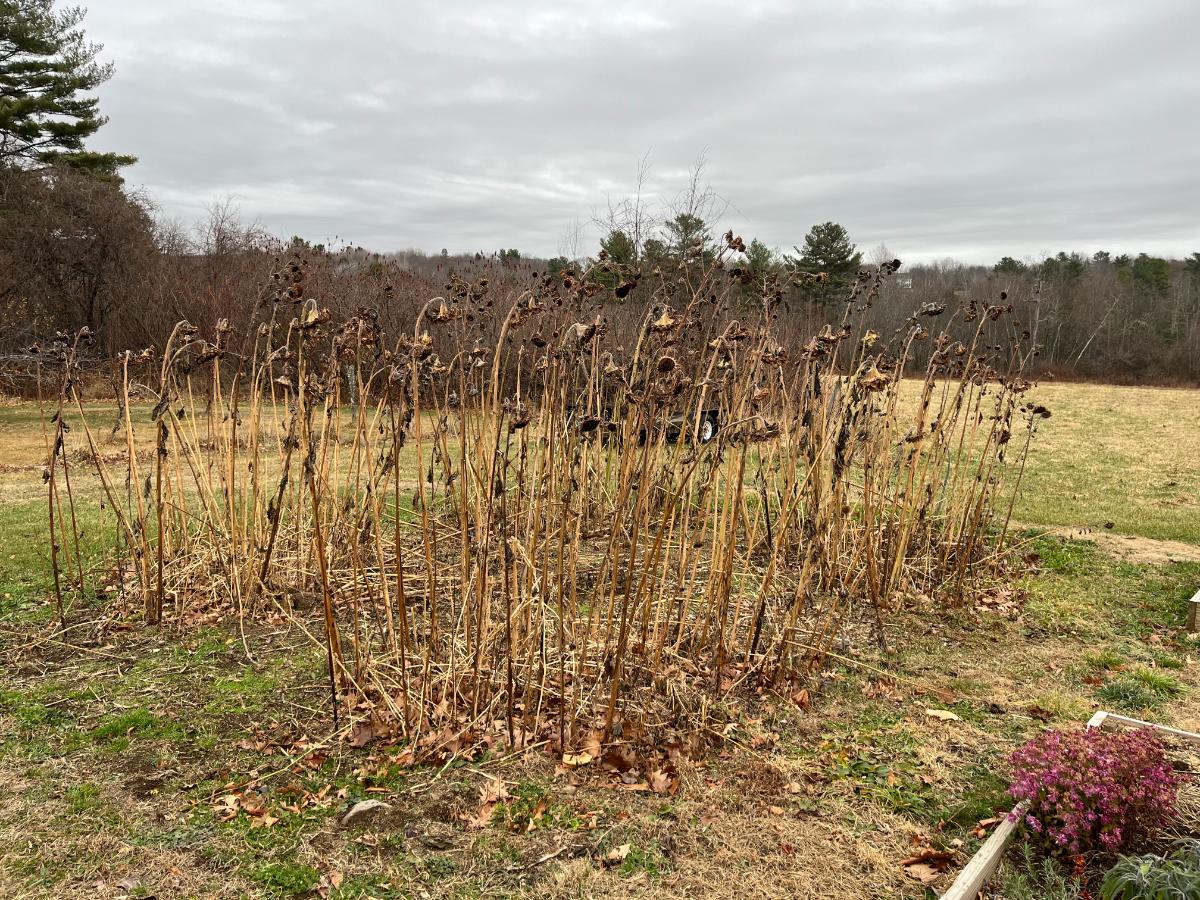
Sunflowers bloom late in the summer, and they’ll often go on into the fall. This means your sunflower house has a long playing life to live.
Even after the growing season, after the flowers stop brightly blooming, there’s a lot of play time left for your house. The sunflower stalks will stand well into winter. Just because it isn’t green and blooming, doesn’t mean there isn’t valuable play time and play space left in the cooler months, or after frost hits.
You can, of course, cut down or pull out your sunflower house when the playtime is done, but an even better and longer life for your house would be to leave it standing into and perhaps through winter.
As the flowers die back, the seed heads will dry. Dried seed heads can be harvested for eating, or you can leave them standing for birds and wildlife. Your sunflower house can be an important, natural source of food for the birds in fall and winter!
This gives you and your kids more to watch, learn, and talk about.
The dead, dried stalks can be cut or pulled later, when the seed heads are gone, or you can leave them for overwintering insects until next spring -- when you can plant a new sunflower house all over again, for another year of fun!

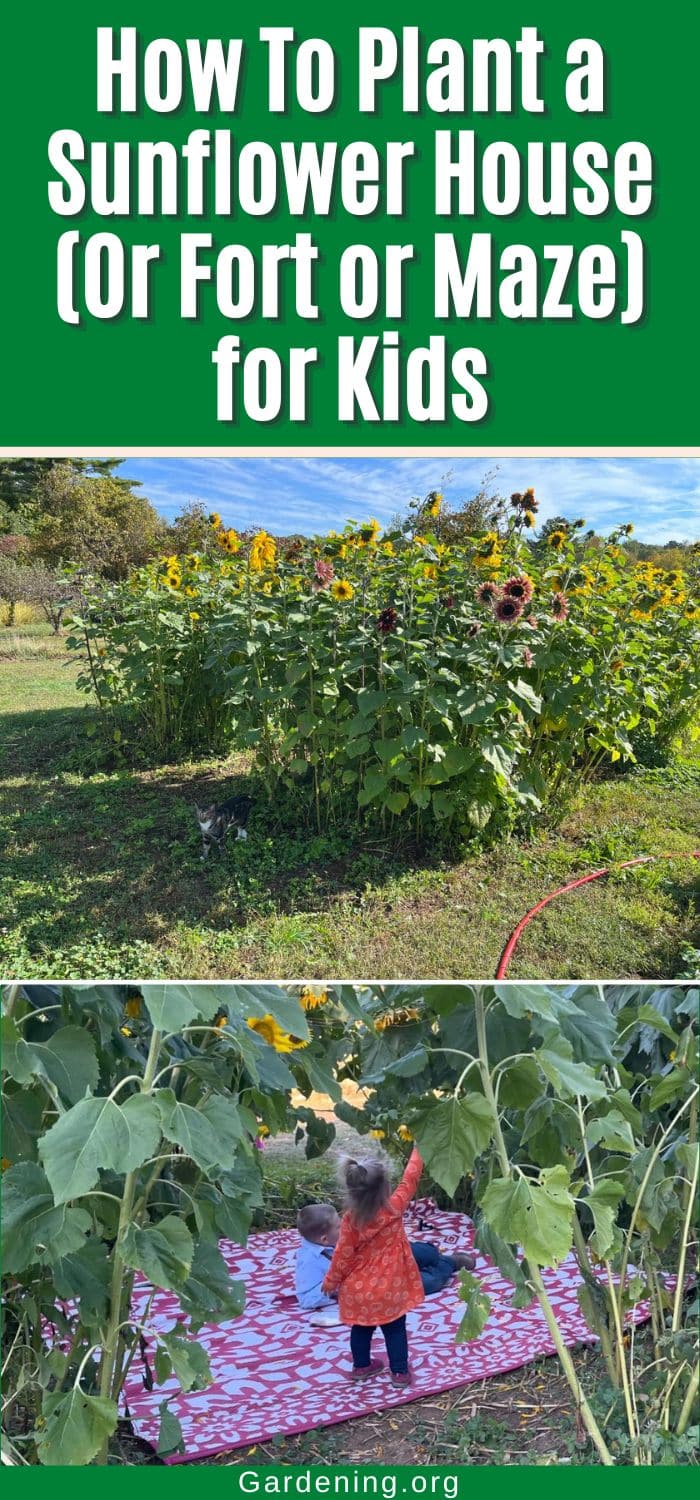

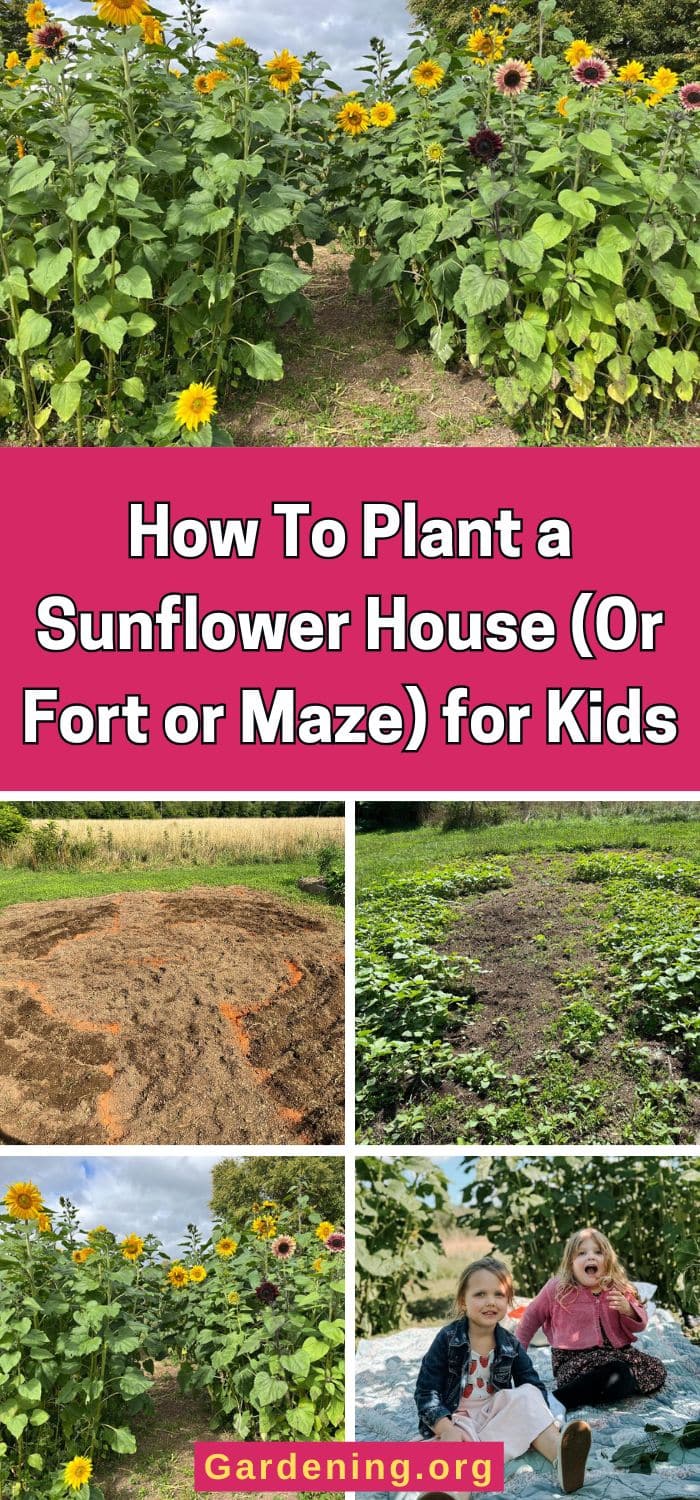
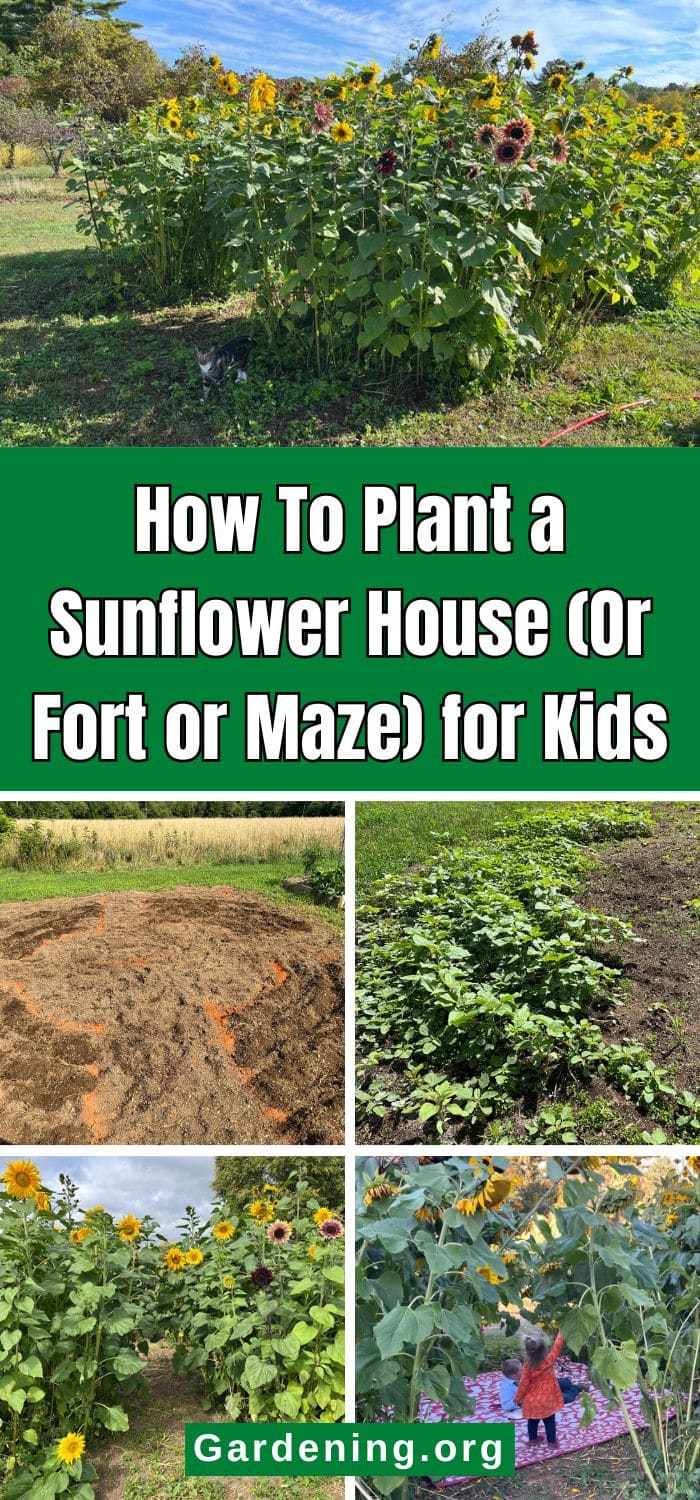
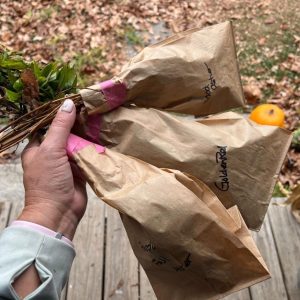

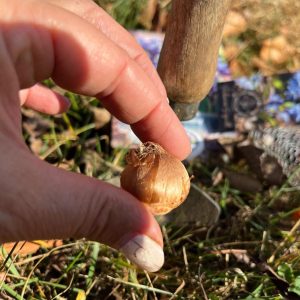

Leave a Reply